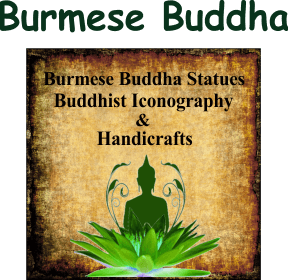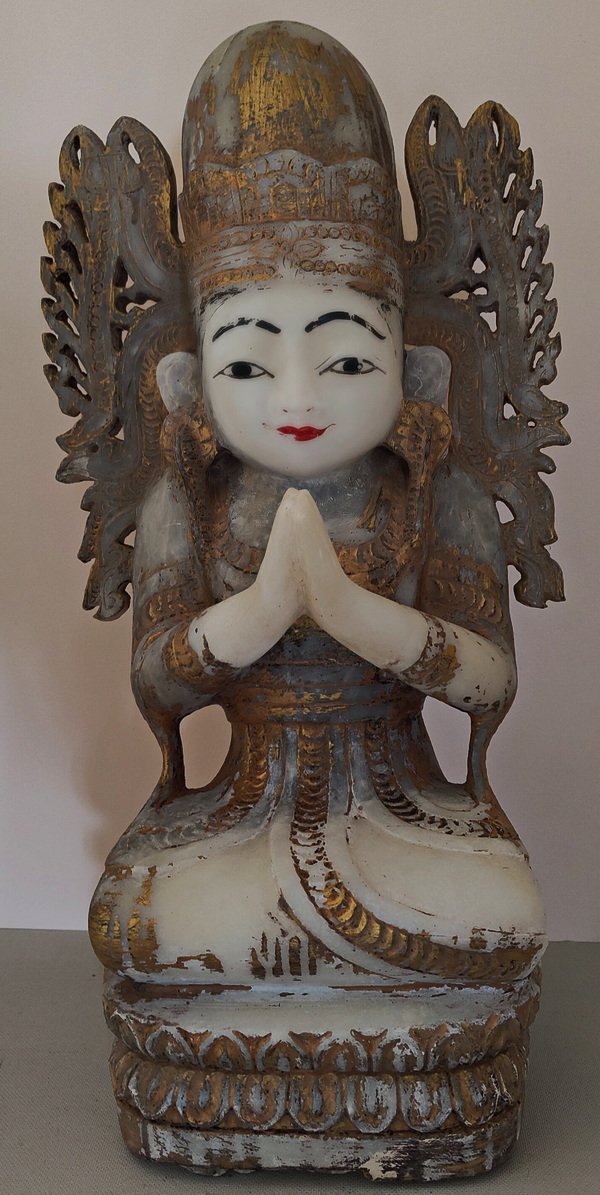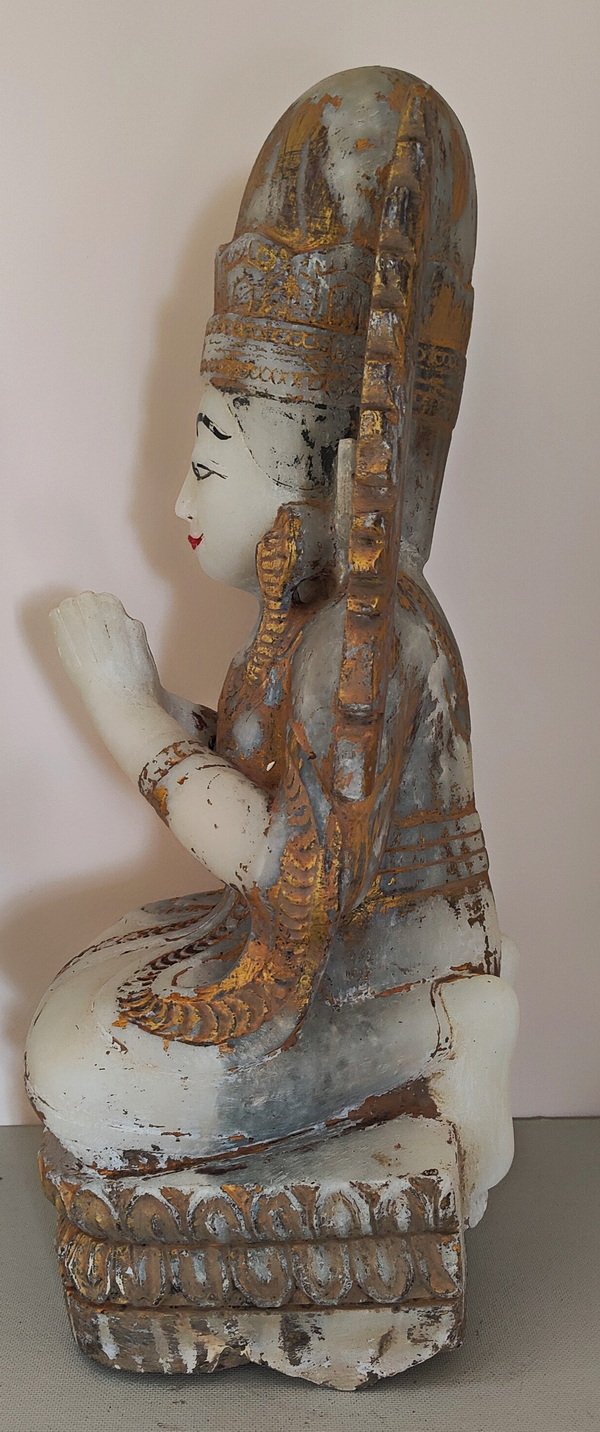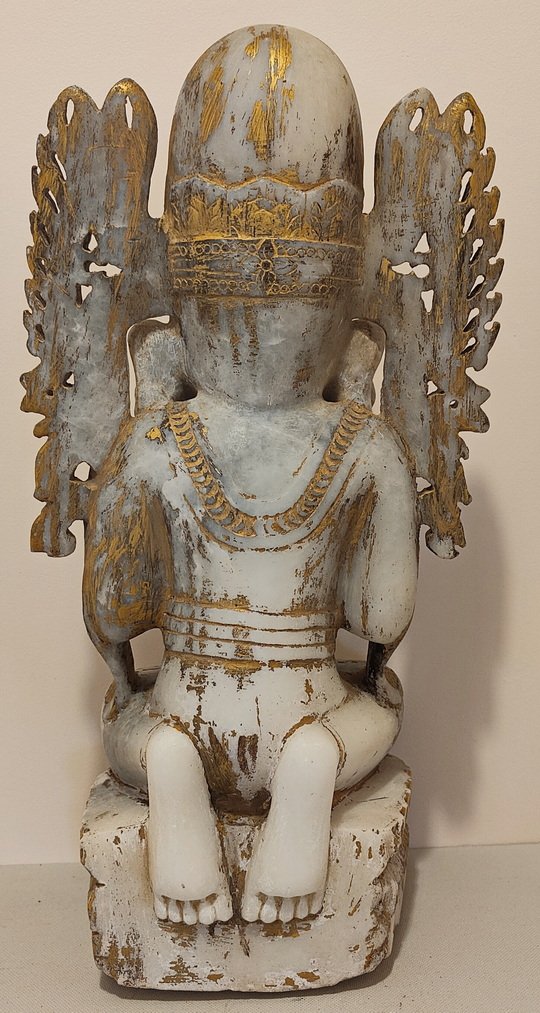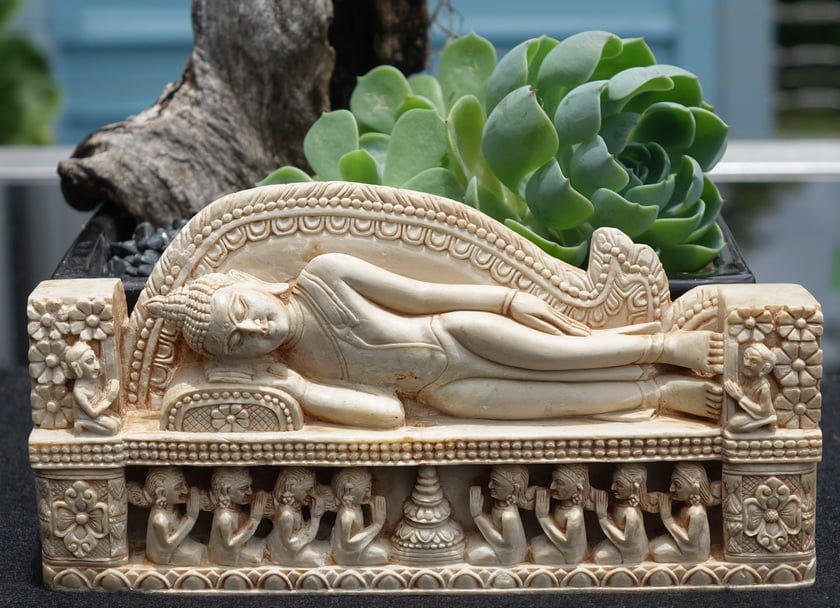A Rare Burmese Alabaster Crowned Statue dating to the Nyaungyan Period with side flanges and a tall rounded headpiece with a carved pronged band around the forehead resembling a crown, large earrings, kneeling on a double lotus pedestal and wearing the regalia of someone of high status or who has attained noble status within the royal court.
A few of the more prominent officials and ministers in Burmese historical books seen in photographs taken during the 19
th century wear a high-domed headpiece such as the one seen on this statue. It is possible seeing as the Burmese refer to this particular style as a “Celestial being with costume” and that this style is rarely seen, that it may be representative of a high official who was in service of the King and attained the same status as a monk, our initial thoughts when looking at this statue was that it was a praying monk.
One of the most prominent Lords during the 19th century was Hpangyet Wundauk, the deputy minister for glass works who had been educated in France, obtaining a diploma in civil engineering from the Central School in Paris and was a member of another highly respected and important official Kinwun Mingyi’s mission to the court of St. James in England and was one of the authors of the treaty of goodwill and commerce between France and Burma.
Some famous Burmese high officials who have served the kings of Burma are also represented in the pantheon of 37 Nats. The Nat Min Mahagiri is also depicted wearing a high domed headpiece and was according to legend an ordinary person who gained notoriety for his strength and running afoul of the king, he along with his sister became the guardian spirits of Pagan.
The Nyaung Yan period in Myanmar’s history is commonly known as the second Taungoo period due to its establishment by a descendant of the Taungoo dynasty. Following the reign of Bayint Naung, his son King Nanda Byin faced defeat and lost his throne and capital, Hamsavadi, to a combined attack by Rakhine, Taungoo, and Tahnyin. The invaders plundered his capital and the opulent palace of Kambozathadi. Unfortunately, Nanda Byin passed away without reclaiming his kingdom from the enemy forces.
However, another son of Bayint Naung, known as the Lord of Nyaung Yan, successfully regained control over the country, reconstructed the kingdom, and established the Nyaung Yan dynasty, which endured for 153 years. Among the eleven kings of this dynasty, three rulers played significant roles in governing and promoting the teachings of Buddha. These notable kings were Anaukpatlun (1605-1628 AD), Thalun (1629-1648 AD), and Taninganwe (1714-1733 AD).
Other examples of a Burmese rounded headpiece

